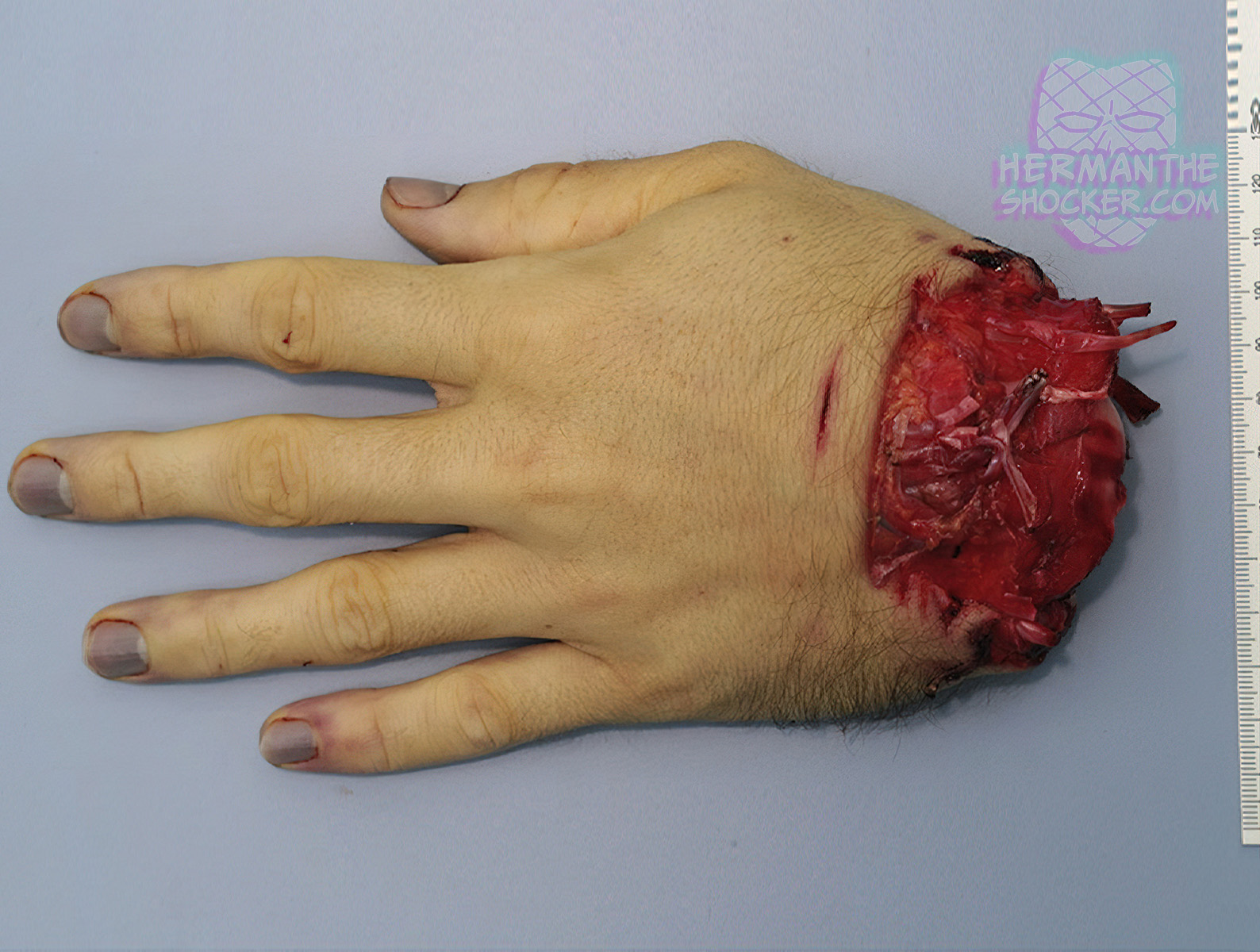Australia. This male individual died from sharp-force injuries to the chest and left wrist in the setting of neck compression in an assault involving dismemberment with a knife and hatchet. Situated on the chest, there was an injury complex comprising three incised stab-type injuries that entered the chest and were associated with some linear superficial incised components. The stab wounds on the left anterior chest wall were associated with incised injuries to the left 4th and 5th costal cartilages. The stab wound to the right anterior chest wall was associated with an incised injury to the sternum in the region of the xiphisternum. The three stab wounds to the chest resulted in incised injuries to the right ventricle, left upper lung lobe, and a 800 mL left hemothorax. The left hand was severed at the wrist.
There was some bruising on the adjacent skin. The wound margins were regular, although associated with a number of discrete incised components (possible hesitation marks). The hand was severed through the distal ulnar and radiocarpal joint with fracturing of the radius and carpal bones. The severing seemed to involve the radial styloid. The lunate was intact, but the capitate was fractured.
On the anterior and radial aspects of the left forearm, there was an injury complex comprising two discrete incised injuries. The longer of these injuries, situated closer to the ulnar aspect of the forearm, was relatively superficial and barely penetrated the skin. The smaller of the two injuries proximally, in the region of the cubital fossa, extended through skin and subcutaneous fat to breach the underlying muscle. The injury in the left cubital fossa extended into the subcutaneous tissue.
A number of variables need to be considered when commenting on the degree of force required to produce the stab wounds to the chest and the severing of the left wrist. These variables include the effects of clothing, skin and subcutaneous tissue, the type of knife (shape and sharpness of the tip), and relative kinetic energy conferred on the blade. Taking into account these variables in this case, the fact that there was significant cartilaginous and bony injury indicated that a severe degree of force was required to produce both the injuries to the chest and the wrist (on a three tier scale of mild/moderate/severe).
Both the stab wounds to the chest and the severing of the wrist were in areas that are amenable to self-inflicted injury, although the involvement of another party was not excluded. The wounds to the chest would not have been immediately incapacitating. There was a ligature around the neck but no associated laryngeal injury or strap muscle hemorrhage.
Latest posts













